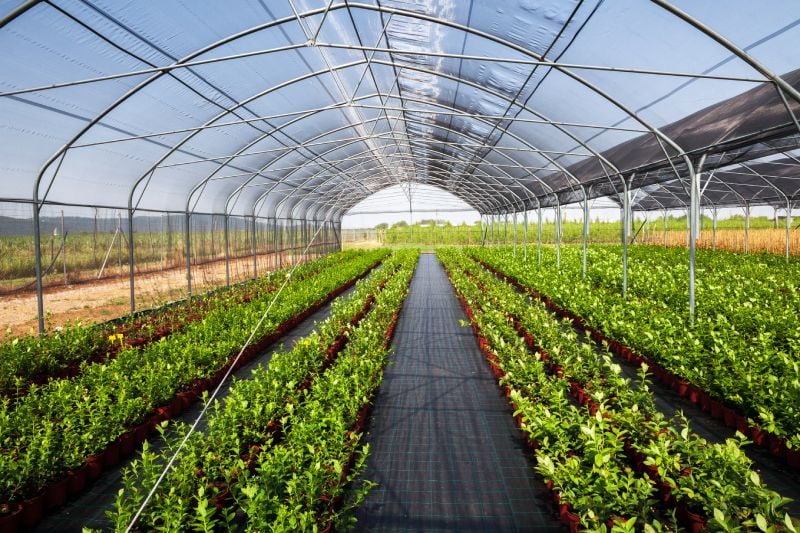Humidity Management: Controlling the Moisture Content of Greenhouse Air
)
Proper humidity control is a crucial aspect of successful greenhouse cultivation that can make or break your plants. Maintaining the proper humidity levels in the air is crucial for the health and growth of your plants. In this article, we'll examine the significance of humidity control in commercial greenhouses, as well as effective methods for managing moisture levels.
Understanding the Significance of Humidity Management
Humidity, or the quantity of moisture in the air, has a substantial impact on plant growth and greenhouse operations. Why humidity control is so important:
Preventing Disease: Excessive humidity can foster the growth of mould, mildew, and fungal-based diseases. Proper humidity control reduces the likelihood of these problems, preserving the health of your plants.
Optimizing Photosynthesis: For photosynthesis, the process by which plants convert light into energy, plants require a balanced supply of water vapour in the air. Maintaining the proper levels of humidity ensures efficient photosynthesis and robust plant growth.
Reducing Stress: Fluctuating humidity levels can burden plants, resulting in lower yields and produce of inferior quality. Controlling humidity consistently reduces tension and promotes steady growth.
Effective Methods of Controlling Greenhouse Humidity
Now that we comprehend the significance of humidity management, let's examine some strategies for effectively controlling moisture levels in your commercial greenhouse.
Utilize Humidifiers and Dehumidifiers: Install humidifiers when the air is too dry and dehumidifiers when humidity is too high. These devices can maintain the optimal relative humidity range for your plants.
Natural Ventilation: Proper ventilation is essential for humidity control. Ensure that your greenhouse has well-positioned vents and blowers that can facilitate the exchange of humid air with drier air from the outside when necessary.
Irrigation Methods: Be aware of your irrigation methods. Overwatering can increase relative humidity, so irrigate plants only when necessary and avoid excessive irrigation.
Monitoring and Automation: Invest in humidity sensors and automation systems capable of monitoring and adjusting humidity levels as required. This assures precise control without the need for constant manual input.
Shade Cloth: The use of shade cloth can reduce the intensity of sunlight and, consequently, the rate of evaporation, thereby aiding in the maintenance of adequate relative humidity levels.
Temperature Management: Temperature management can indirectly affect humidity. Lower temperatures can diminish the air's capacity to hold moisture, potentially increasing relative humidity.
Crop Selection: Select plant varieties that are better suited to the local climate and greenhouse conditions in your area. Some plants are more resistant to changes in humidity than others.
Controlling humidity is an essential aspect of maintaining healthy and productive vegetation in commercial greenhouse operations. By understanding the significance of humidity, implementing effective strategies, and using technology to monitor and modify conditions, you can create a favourable environment for the growth of your plants. In addition to improving the quality and yield of your crops, proper greenhouse humidity control will contribute to the overall success of your greenhouse operation. Contact Cultivate & Equipment today for your greenhouse humidity management needs.
| Tags:GreenhouseLatest News |

